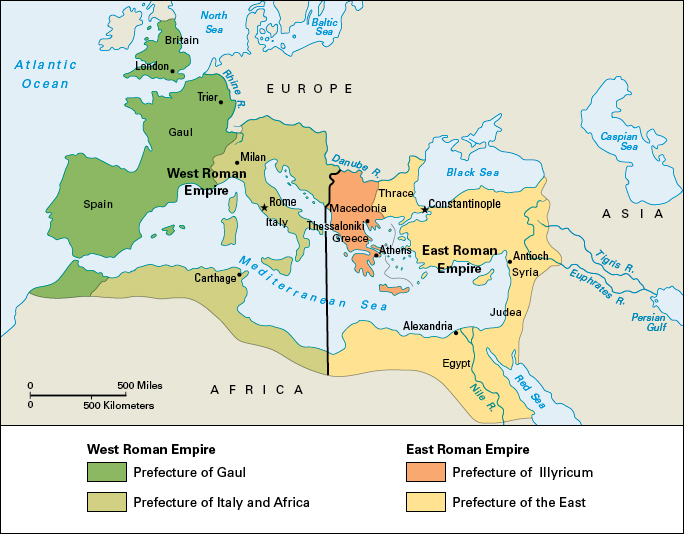Migration Period was a time of large-scale movements of human populations in European history. The period began around A.D. 300 and lasted until 700. Many historians consider the period to have begun when the Huns invaded Europe and ended with the Lombards conquering what is now Italy. Huns were a central Asian people who invaded southeastern and central Europe and established a powerful empire in the A.D. 400’s. The Lombards were a Germanic people who invaded Italy in 568 and seized control of much of the Italian Peninsula for nearly 200 years. 
The migrations involved the Angles, Franks, Goths, Huns, Lombards, Saxons, and Vandals, among other Germanic and Slavic tribes. They occurred throughout what is now Britain, Europe, North Africa, and Turkey. The Migration Period led to the absorption of several peoples by other groups and a decline in agriculture, literacy, population, and trade.
The Huns were nomadic (traveling) herders and warriors. Starting in the late 300’s, they migrated into the areas around the Black Sea. As they did, they drove large numbers of Goths into the West Roman Empire. The Goths were a confederation of Germanic tribes that originated in Scandinavia. The West Roman Empire covered much of what is now England, Western Europe, and North Africa. The Goths first migrated to what is now Poland and to the region north of the Black Sea. In the 300’s, the Goths split into two groups. The Goths north of the lower Danube River became the Visigoths, and those north of the Black Sea became the Ostrogoths.
After A.D. 370, both Gothic kingdoms were attacked by the Huns. The Ostrogoths were absorbed into the Hun empire. The Ostrogoths later gained freedom from Hun control in 453, and in 489, they invaded northern Italy. The Ostrogoths remained in Italy until the Eastern Roman Empire overthrew them during the mid-500’s. The Huns were eventually absorbed into various peoples of Europe.
The Visigoths fled to and conquered the Roman province Thrace, later invading Italy in the early 400’s. After looting the West Roman Empire, the group traveled to Spain and Gaul (now mainly France). In 507, the Visigoths in France were defeated by the Franks, a Germanic people living in Gaul. The remaining Visigoths settled in Spain until the Arab invasion of 711.
The West Roman Empire steadily weakened as it was invaded on many fronts. A Germanic people called the Vandals invaded Gaul, Spain, northern Africa, and eventually Rome, before the Byzantine Empire conquered the Vandals in 534. In Britain, local peoples known as the Picts, Scots, and Saxons attacked Roman troops. The Angles made up one of the Germanic peoples who invaded Britain during the A.D. 400’s and 500’s. A Vandal leader named Gaiseric plundered the city of Rome again in 455. The empire’s final collapse came in 476, when the German leader Odoacer forced the last emperor from the seat of power. After the West Roman Empire fell, the East Roman Empire survived as the Byzantine Empire. The Byzantines survived by offering large peace payments to the groups invading surrounding areas.
As a result of the migration and violence in the Migration Period, groups grew hesitant to form alliances, maintaining their independence to survive. Trade decreased among groups. The period also resulted in a decline in population and a decrease in agricultural yield. Communities left settlements, leaving behind crops and tools. Many historians believe there was also a relative cooling of climate in the Migration Period, leading to poor crop output. Education and military structures deteriorated as people moved, contributing to a high rate of illiteracy.
